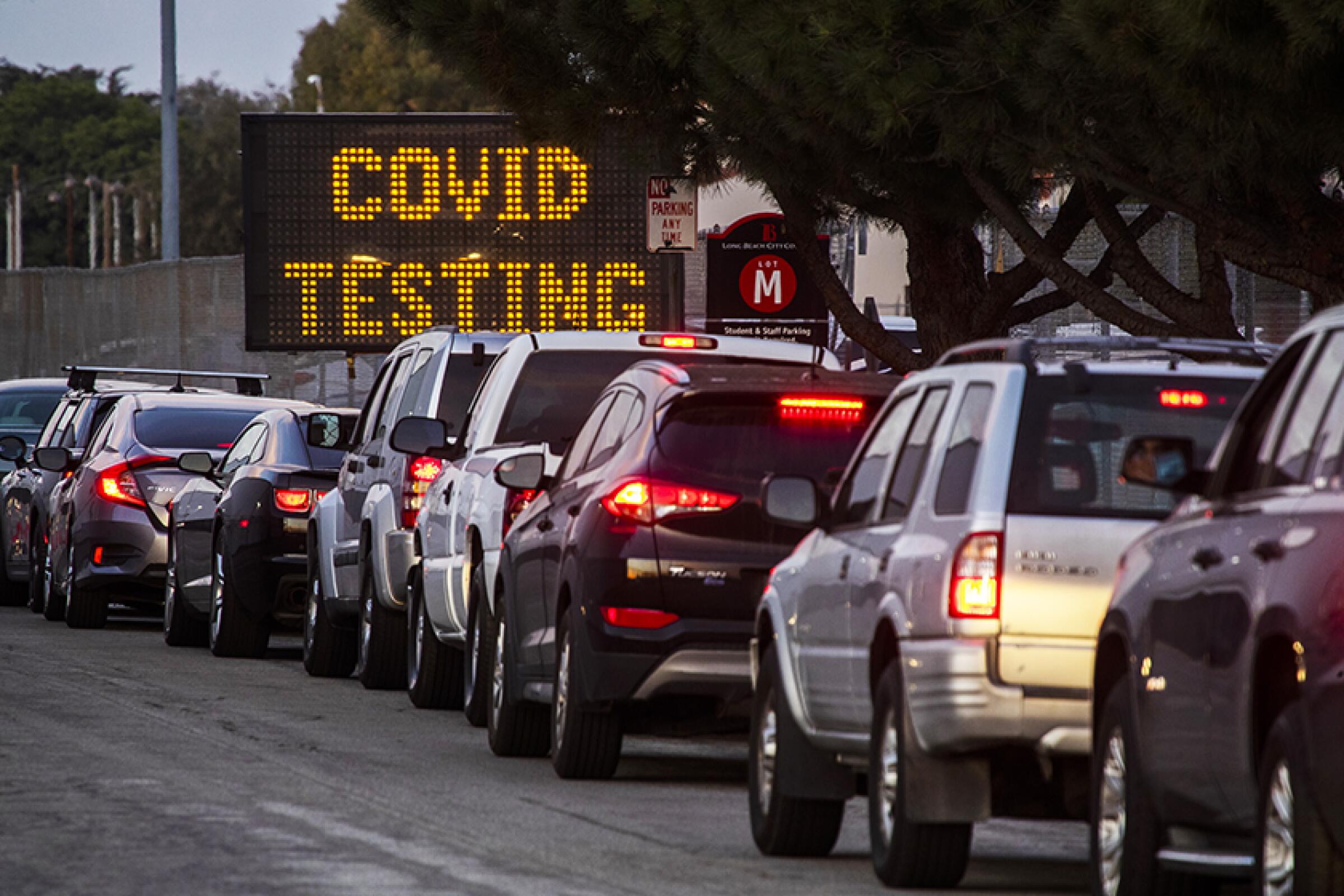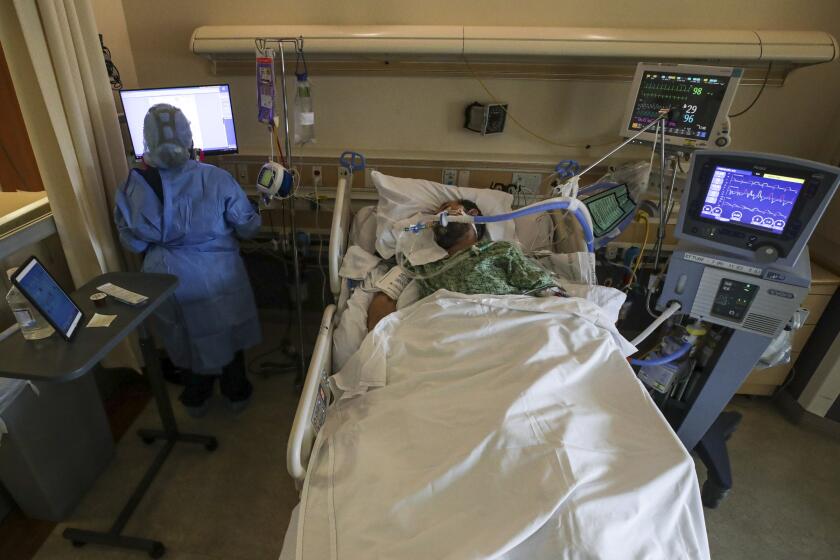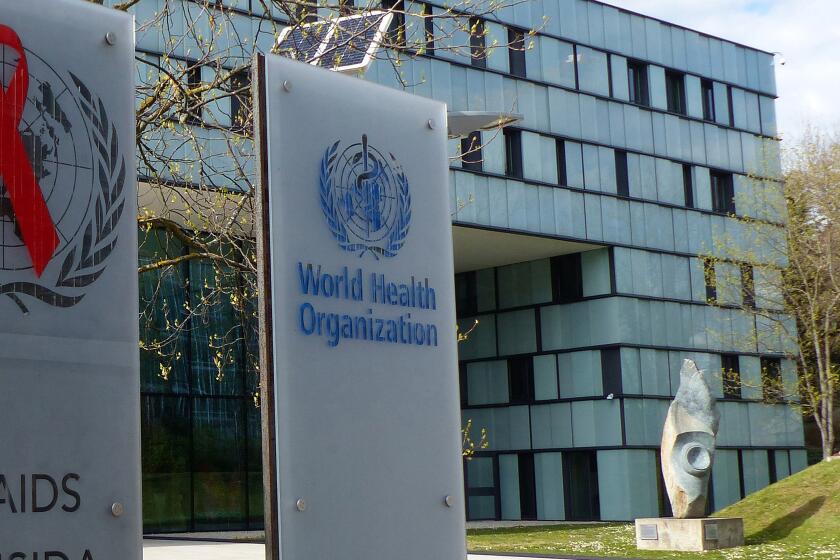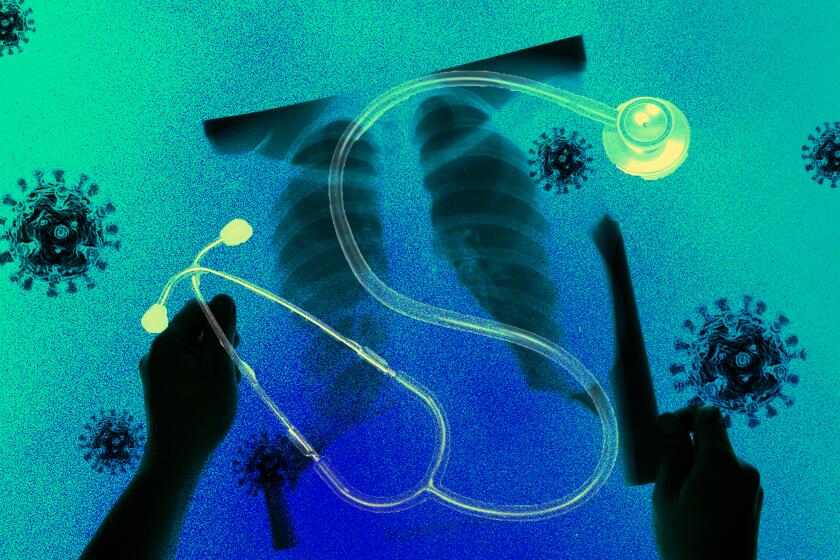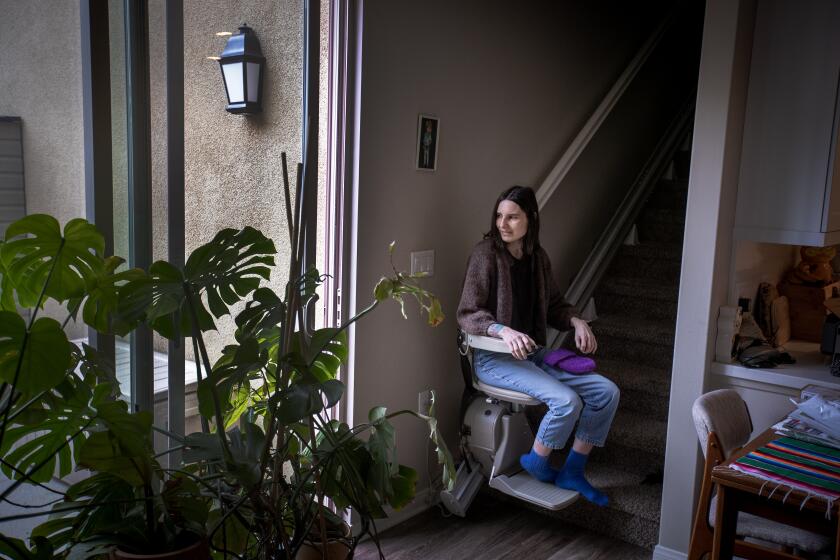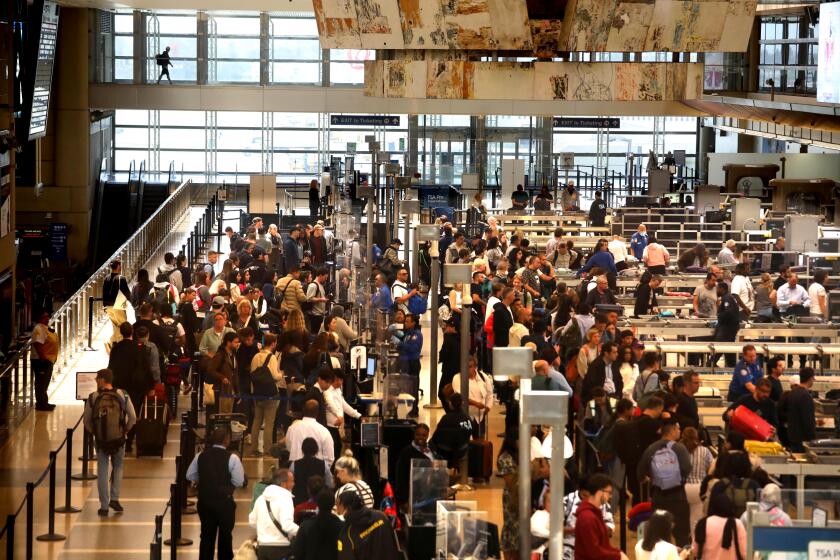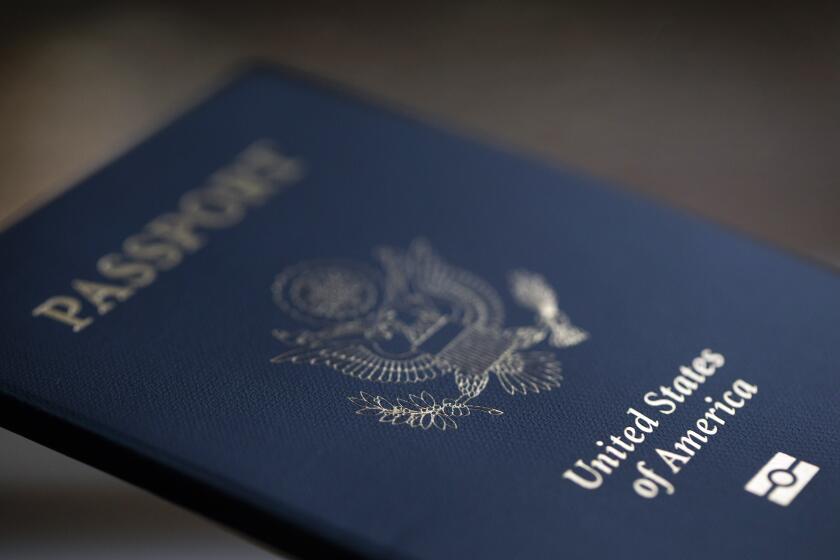Emily Alpert Reyes covers public health for the Los Angeles Times.
- Share via
1
People do not need to have tested positive for the coronavirus to be considered for a diagnosis of long COVID, a new report from the National Academies of Sciences, Engineering and Medicine concludes.
The report, produced by a committee of experts at the request of the U.S. Social Security Administration, aims to summarize what is known about long COVID, a complex condition that was estimated to affect more than 9 million people in the United States in 2022.
Among its conclusions: Because testing has not always been available to people with COVID-19 — and because some who tested themselves at home never reported the results to healthcare systems — many who were infected never received formal documentation of their illness.
Some long COVID cases “have arisen from the early days of the epidemic, before testing was even generally available,” said Dr. Paul Volberding, professor emeritus of medicine at the University of California San Francisco, who served as chair of the committee. As the pandemic has evolved, some “people live in areas where they might not have easy access to tests.”
The report concluded that “sole reliance on a documented history of SARS-CoV-2 infection when diagnosing long COVID will miss these individuals,” so symptoms and “self-reported prior infection” are generally sufficient to establish that someone has been infected. As it stands, no diagnostic test for long COVID is available.
This past winter, the mortality rate for patients hospitalized with COVID-19 was 35% higher than for patients hospitalized with the flu.
2
Symptoms differ
Long COVID can affect people in myriad ways, the report found. Experts tallied up more than 200 symptoms that can be caused by the disease, which can wreak havoc on the cardiovascular, endocrine, respiratory, nervous and gastrointestinal systems, among other effects.
Some commonly reported health effects such as chronic fatigue are not included among the impairments listed by the Social Security Administration, even though they can interfere significantly with one’s ability to work or go to school. The report concluded that “it is likely that most individuals with Long COVID applying for Social Security disability benefits will do so based on health effects not covered” in those listings.
Volberding said people whose symptoms do not fall under those listed impairments can still be found to be disabled by the Social Security Administration, but “the finding of a determination of disability is a little more challenging if a condition doesn’t fit with one of the written listings.”
After grave missteps in the pandemic, the World Health Organization convened experts in virology, epidemiology, aerosol science and bioengineering to examine evidence on how airborne viruses and bacteria spread.
3
Risk rises with severity of infection
The risk of suffering long COVID rises with the severity of the initial infection: People hospitalized for COVID-19 are estimated to be 2 to 3 times more likely to experience long COVID than those who were not hospitalized, the report concluded.
But people with mild illness can also develop long COVID — and because there are so many more of them, they make up the bulk of those with long COVID, the report found.
Rest is crucial after COVID-19, but the systems in this country don’t support mental health well or the physical health needs of folks who need it.
4
No known cure
There is no known cure for long COVID, according to the report. Recovery can vary dramatically from person to person. Long COVID “appears to be a chronic illness,” the report found, “with few patients achieving full remission.”
Some evidence shows that many people with persistent symptoms three months after the initial infection have improved by the 12-month mark. Although data on longer-running illness are limited, “preliminary data suggest that recovery may plateau or progress at a slower rate after 12 months,” the report concluded.
If you have long-term symptoms of COVID-19 or any other condition, navigating the healthcare system can be rough. Tips for getting the care you need.
5
Patients struggle for care and resources
Demand for specialty care to help long COVID patients has outstripped capacity, resulting in waiting lists. Meanwhile, patients can encounter skepticism about their symptoms, which discourages them from seeking care and can particularly affect those who are disadvantaged in other ways.
One in 10 people infected with the coronavirus during the Omicron era suffered from long COVID, indicating the syndrome remains a notable threat.
6
Similar ailments exist
Long COVID shares many features with other chronic conditions, such as myalgic encephalomyelitis, also known as chronic fatigue syndrome; fibromyalgia; and postural orthostatic tachycardia syndrome, or POTS. More research is needed on how to manage such illnesses.
The Social Security Administration sought the report to better understand how long COVID might affect the need for its disability programs. Members on the committee assembled by the National Academies included physicians specializing in infectious diseases, neuropsychology and pediatrics; the chief medical officer of Kaiser Permanente; and the former global medical director for ExxonMobil.
Volberding said many other questions about long COVID are yet to be settled.
“This is an area where society — and Social Security — are going to need to keep their eye on this as we continue to learn more.
“These people with long COVID really are suffering,” he added. “Even if we’d rather, as a society, ignore the pandemic altogether, you can’t ignore the challenge that these people are facing.”
Last summer’s COVID wave in California was big enough to cause significant disruptions. As a new family of subvariants takes hold, how bad will this year be?
